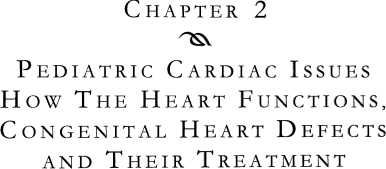|
 The human heartThe heart is a marvellous combination of functional simplicity and systemic complexity. It is, on the one hand, simply a large muscle specifically designed to pump blood through the blood vessels of the body. On the other hand, its importance, while self-evident in one respect (if it does not work, you die) is hidden in many others (if it does not work perfectly, your health can be compromised in less-obvious ways). The functioning of all other organs and systems within the body depends on an adequate blood supply. One example of this is the brain. Reduction or impairment in its supply of blood can result in a loss of neurological function, a loss of consciousness, or even death. One can, of course, appreciate what a sudden and sustained loss of blood supply can do to someone. But impairment in blood circulation can progress so slowly and over such a long period of time that, while its impact can be serious, its consequences may be difficult to detect. Problems can occur if the heart's ability to function adequately is even slightly impaired. Slow deterioration in cardiac performance can cause an equally slow deterioration in other organ performance. Thus, diagnosing even a minor condition that impairs the heart's performance is important. While one's life may not be immediately threatened by a minor impairment, ultimately one's life can be seriously affected and even shortened by the eventual deterioration and failure of other life-sustaining organs, such as the lungs, the kidneys and the liver. The heart, therefore, plays a central role in sustaining the optimal performance of all other organs and bodily systems. The heart must perform its function in such a way as to enable all other organs of the body to perform their tasks. The heart muscle even sustains itself. In pumping blood, the blood vessels of the heart, the coronary arteries, are themselves filled with blood. The heart muscle is thereby nourished, allowing it to continue to perform its pumping. The heart performs a vital balancing act with each contraction. It pushes blood in two major directions-to the lungs and to the body. Blood flows to the lungs through the pulmonary arteries and from the lungs through the pulmonary veins, in what is referred to as the pulmonary circulation. Blood flows to the body through arteries and their smaller branches and from the rest of the body in veins and their smaller branches. This is known as the systemic circulation. The amount of blood flow needs to be equal through the left and right sides of the heart and through the systemic and pulmonary circulations.
|
| Current | Home - Table of Contents - Chapter 2 - The Human Heart |
| Next | How a Normal Heart Works |
| Previous | Chapter 1 |
| Section 1 | Chapter 1 - Introduction to the Issues |
| Chapter 2 - Pediatric Cardiac Issues | |
| Chapter 3 - The Diagnosis of Pediatric Heart Defects and their Surgical Treatment | |
| Chapter 4 - The Health Sciences Centre | |
| Section 2 | Chapter 5 - Pediatric Cardiac Surgery in Winnipeg 1950-1993 |
| Chapter 6 - The Restart of Pediatric Cardiac Surgery in 1994 January 1, 1994 to May 17, 1994 |
|
| Chapter 7 - The Slowdown May 17 to September 1994 |
|
| Chapter 8 - Events Leading to the Suspension of the Program September 7, 1994 to December 23, 1994 |
|
| Chapter 9 - 1995 - The Aftermath of the Shutdown January to March, 1995 |
|
| Section 3 | Chapter 10 - Findings and Recommendations |
| Appendix 1 - Glossary of terms used in this report | |
| Appendix 2 - Parties to the Proceedings and counsel | |
| Appendix 3 - List of witnesses and dates of testimony | |
| Diagrams | |
| Tables | |